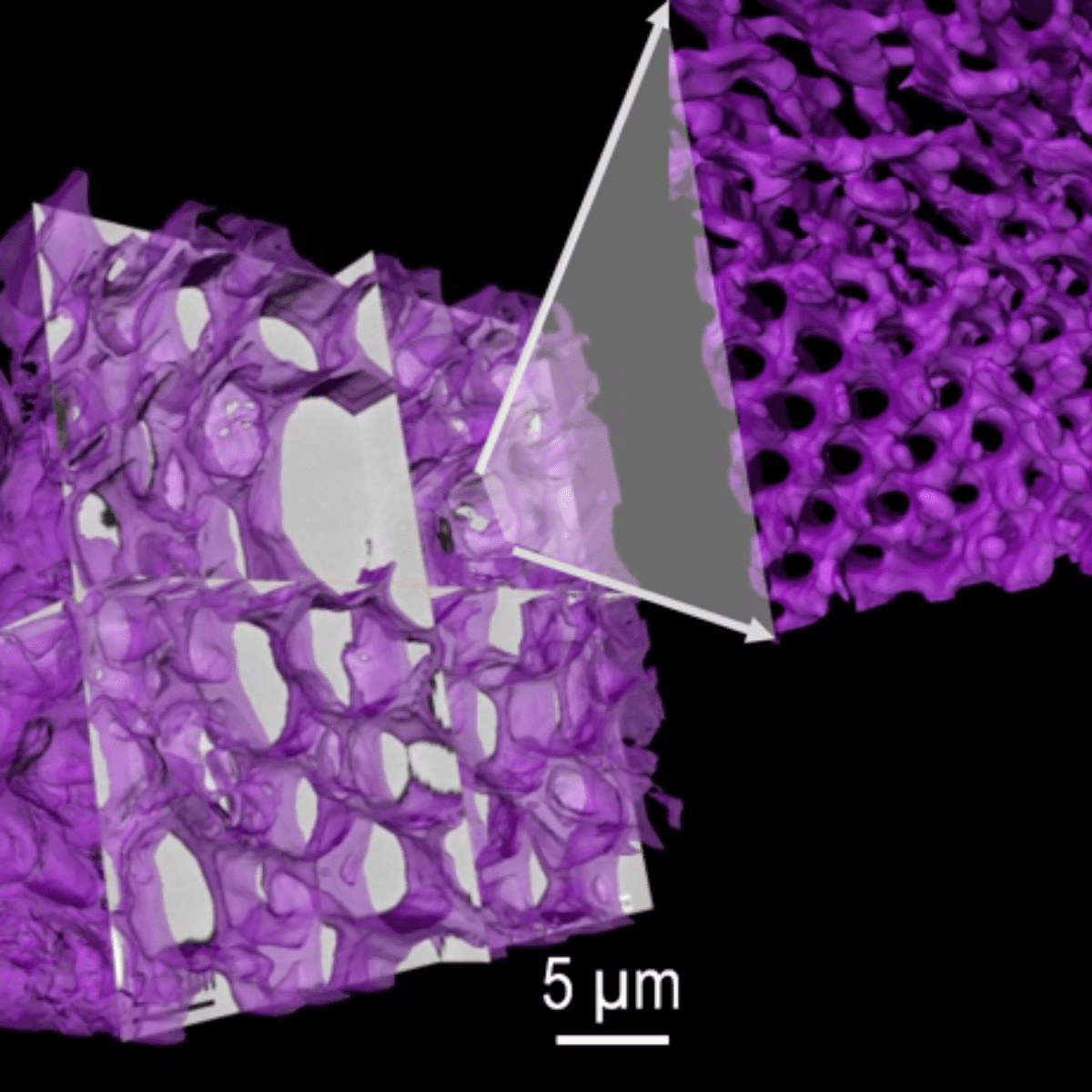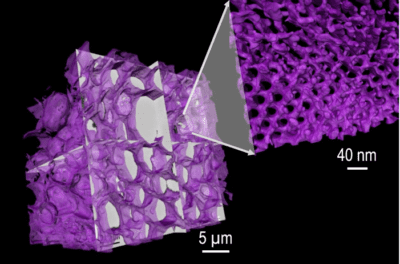
Research investigates reproducing the morphology of complex biological systems in the nanoscale for technological purposes
The morphology of biological systems has fascinated both architects and scientists, and their reproduction in the nanoscale could be very useful for technological purposes. This type of structure is already considered a candidate for applications in chemical catalysis, air filters for virus elimination, and membranes for water purification and separation of proteins.
Therefore, researchers from the King Abdullah University of Science and Technology (KAUST), in Saudi Arabia, led by Suzana Nunes, demonstrated for the first time a simple method to obtain complex hierarchical structures, organized like honeycombs, with globular cavities in micrometric scale.

3D image of polymer structures with pores in micro and nanometric scale.
The wells are interconnected by extremely regular pores with dimensions around 15 nanometers, such as those observed in certain planktons.
The preparation method uses solutions of block copolymers, such as polystyrene-b-poly(butyl acrylate). The initially homogeneous solution undergoes phase separation on a microscopic scale, which is completed and solidified by simple and rapid immersion in water.
Confirmation of the morphology of these materials was essential for this development. Combining tomography techniques and transmission electron microscopy, images with 3D reconstruction were obtained for the characterization of the nanopores in these structures. In addition, through experiments in the SAXS1 Small Angle X-ray Scattering beamline of the Brazilian Synchrotron Light Laboratory (LNLS), it was possible to confirm that the copolymer molecules are arranged in ordered hexagonal form in solution.
The results contributed to the optimization of the process, identifying the solvent, additives and polymer concentrations most adequate to obtain the perfect hierarchical structure.
Sources:
[1] S. Chisca, V.-E. Musteata, R. Sougrat, A. R. Behzad, S. P. Nunes, Artificial 3D hierarchical and isotropic porous polymeric materials, Science Advances 2018, 4, eaat0713. DOI: 10.1126/sciadv.aat0713
[2] V.-E. Musteata, S. Chisca, F. Meneau, D.-M. Smilgies, S. P. Nunes, Faraday Discuss., 2018,209, 303-314. DOI:10.1039/c8fd00015h
Research shows potential of combining mineral with graphene for the design of new devices
Results have potential applications in the production of biomedical images and in the detection of individual molecules